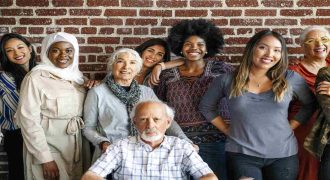The necessity of collective impact has never been more important in the times, when social issues are becoming more complicated and interconnected. Collective impact is used when denoting the dedication of a set of actors in various sectors to a shared agenda of resolving a particular social issue. The core of this strategy is successful community engagement that is used to ensure diverse voices are represented and that the strategies work. In this blog, the author examines different community engagement strategies that can be used to make meaningful collective impact.
Understanding Collective Impact
The collective impact is developed on the assumption that one organization cannot deal with complicated social problems unilaterally. Rather, it needs the cooperation between different actors, such as nonprofits, government agencies, businesses, and community members. The major aspects of a collective impact initiative are:
- Common Agenda: The participants have a common vision of the desired change and have common goals.
- Shared Measurement Systems: The success is monitored as one and all stakeholders should be held responsible.
- Mutually Reinforcing Activities: Various organizations and individuals go to work together to reinforce the others.
- Continuous Communication: This will create trust and cooperation among stakeholders through open communication.
- Backbone Support: This is a specific organization or group that organizes the collective effect and gives assistance and materials.
Strategies for Effective Community Engagement
The process of developing effective community engagement is a strategic process that requires deliberate efforts. The following are some of the ways that may be used to engage communities as far as collective impact is concerned:
1. Build Trust and Relationships
Successful community engagement is based on trust. By establishing authentic relationships with people in the community, the initiatives can make them feel like they own the initiatives. Strategies include:
- Listening Sessions: Hold meetings to which the members of the community would be able to express their experiences, concerns, and ideas. This does not only instill confidence in them, but also makes their voices shape the agenda.
- Regular Communication: Inform the community about the progress, decisions, and results. Being open allows gaining trust and promotes further participation.
2. Foster Inclusivity and Diversity
It is necessary to reach a varied set of voices in order to have a collective impact. This involves the underrepresented groups that are probably the most vulnerable to social ills. The measures to enhance inclusiveness are:
- Targeted Outreach: Utilize multiple platforms to address different members of the community, including social media and local events and collaborations with community organizations.
- Culturally Relevant Approaches: Adapt engagement strategies to appeal to various cultural backgrounds so that everyone in the community will feel considered and appreciated.
3. Empower Community Leaders
The effects of community engagement can be maximized by identifying and empowering the local leaders. Leaders may be liaisons and activists in their circles. Strategies include:
- Leadership Development Programs: Train, and provide resources to assist the community to train on leadership skills. This may allow them to participate actively in initiatives.
- Support Existing Leaders: Work with known community leaders and organizations, use their position to reach others and encourage them to work together.
4. Create Collaborative Spaces
Creating collaborative spaces enables the stakeholders to gather, exchange ideas and work out strategies. It is able to improve problem-solving and innovation. Some strategies that can be used to establish collaborative spaces are:
- Community Workshops: Introduce community workshops where different stakeholders brainstorm on solutions. Promote creativity and co-operation among members.
- Online Platforms: Take advantage of the digital platform to establish forums to discuss and collaborate with each other even when they are not able to be together.
5. Develop Shared Goals and Metrics
It is necessary to set clear objectives and metrics to track progress and hold people accountable. Strategies include:
- Co-creating Goals:Community members have to be invited to participate in the goal-setting process with priorities that will be included in the shared agenda.
- Shared Measurement Tools:Work with the stakeholders to create measures that they all use to monitor progress. This builds a spirit of collective responsibility and supports team work.
6. Celebrate Successes
Rewarding and praising the success may encourage the members of the community and strengthen the importance of their work. Strategies include
- Public Recognition: Reward the contributions of individuals and organizations in community events, newsletters or social media. Success can be deserving of celebrations which may encourage more participation.
- Storytelling: Talk about stories that make an impact and emphasize the roles of members of the community and organizations. This does not only foster pride but as well as community ties.
Case Study: Collective Impact in Action
A good case study of collective impact is the StriveTogether program in Cincinnati, Ohio. StriveTogether is an organization network that targets the outcome of children’s education in the area. Through the above strategies, they have managed to involve many stakeholders such as schools, nonprofits, businesses, and families.
Key Strategies Used in StriveTogether:
- Common Agenda: All the partners are united by the purpose to make sure that all the children in the region are ready to succeed in school and in life.
- Data-Driven Decision Making: The project uses collective measures to monitor the progress and change strategies in accordance with the data.
- Community Engagement: StriveTogether actively participates the families and community members in the decision making process and have their voices heard when making educational policies and practices.
Due to all these strategies, StriveTogether has experienced a tremendous change in terms of the outcomes of education, which can prove the strength of collective impact due to the successful involvement of the community.
Conclusion: The Path Forward
The formulation of collective impact must be founded on the engagement and involvement of the community. Through the strategies proposed in this blog, people and organizations will have the ability to build substantial relationships, enhance inclusivity, and transform the world positively.
Moving into the future, we should remember that we all have a voice and that when united, we can solve the complicated problems that plague our societies. Together, we can make this world a better place to live in.








